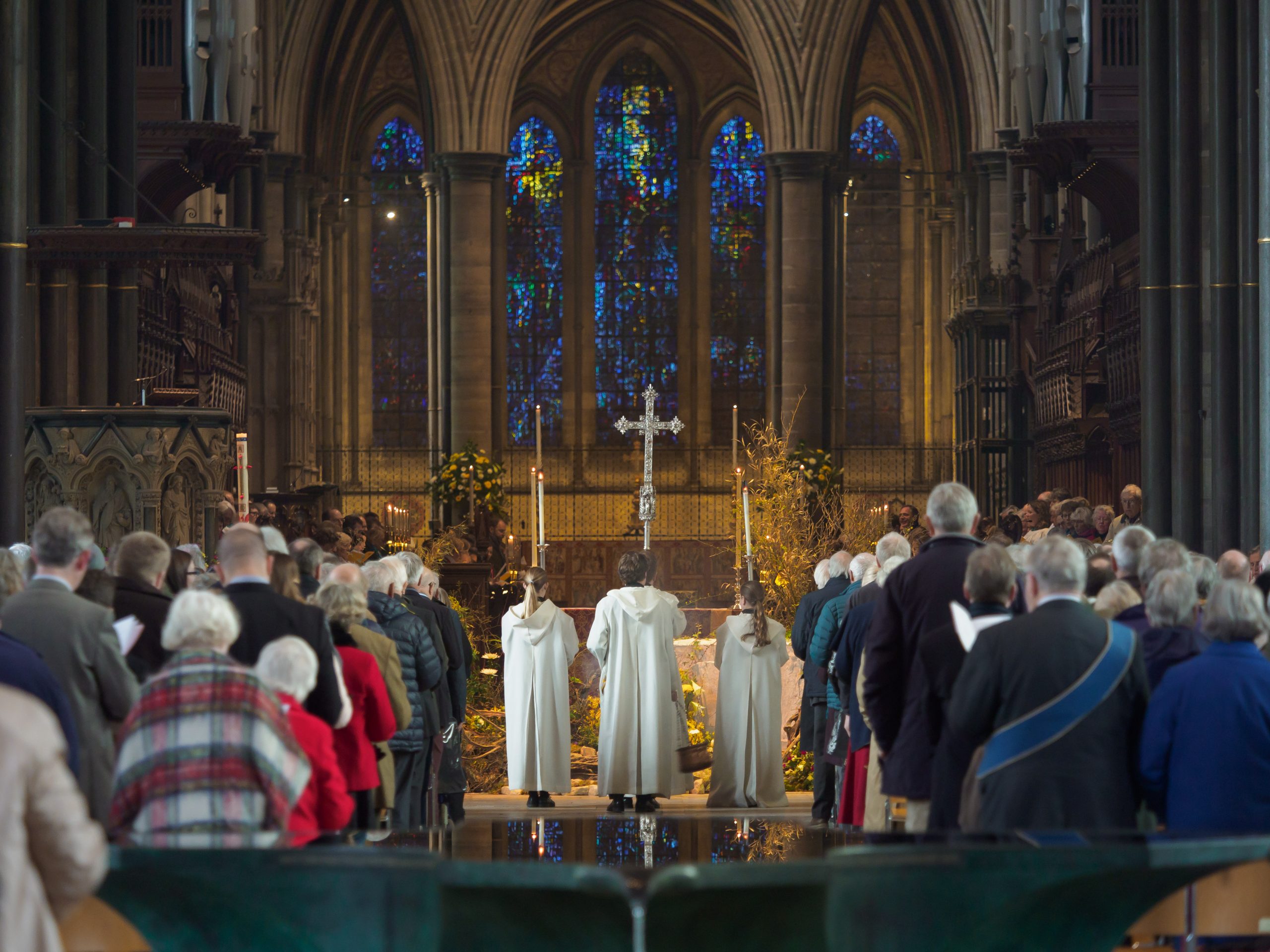To Be Free: paintings by Lucy Jones
To Be Free: paintings by Lucy Jones, 3 September 2023
A sermon, preached by Edward Probert, Chancellor
(Romans 12.9-end; Matthew 16.21-end)
There is a bold exhortation on every car number plate in my mother’s native state of New Hampshire in the USA: LIVE FREE OR DIE. The phrase breathes the revolutionary fervour of the struggle to throw off colonial rule. But what, you may ask, does it mean when endlessly repeated as one drives down the orderly highways of a region of lakes and mountains and forests, or when one looks at a car neatly parked outside one of the state’s old clapboard houses? And, behind these, more fundamental questions, such as: what does it mean to be free?; and how are we to achieve freedom?
Freedom, like motherhood and apple pie, is generally approved of. But it’s never quite as simple as it seems; it works better as a slogan than a project. There are always constraints in life, such as our social environment, or the personal attributes we have been dealt, and the things other people project onto us. You can’t live alongside other people and be completely free; you can’t do everything you might want, if – for example – you have no money.
During the summer we have been mulling over what it means to be free, using the prompts provided by our current exhibition – the works of 8 artists, which currently surround us here in the cathedral. The artist whose work I’ve been asked to reflect on today is Lucy Jones. There are four of her paintings on the wall of the south nave aisle.
Lucy Jones is something of a high achiever. She graduated, decades ago, with a first-class degree. She then won a scholarship to study abroad. She has made a career as an artist. But what jumps out at me from descriptions of her, such as the panels besides those 4 paintings, is the information that she was born with cerebral palsy.
Do I need to know that? Does knowing it give me a better or worse engagement with her art?
Works of art are, to a degree, independent of the artist. Once a book or a picture is released into the world it has a life of its own, and people will respond to these things as they will. And I for one would rather know Lucy Jones through her achievements, the things she has chosen to put into the world, than by her physical characteristics. I was interested, then, to read that she felt her early education was much more frustrated by dyslexia – which is invisible to the outside gaze, and so took some years to be discerned – than it was by her cerebral palsy, which everyone could see. Both conditions may be part of her, but such things define neither the person nor the art.
So, to these works. The four paintings here were done during that recent period – 2020-2022 – when every one of us lived with limitation by lockdowns, social distancing, and much more. Whatever our past experience, whatever our attributes, we all lost some freedom, and we live still with the rumbling aftershocks of those times. So when thinking about these paintings, which are all landscapes, what strike me are spaciousness and vibrancy. Fields and hills, haystacks and trees, colour, rain, rivers and skies; barely a building, and not a person, in sight. Delving a little deeper into the artist’s biography, I find that Lucy Jones grew up in London. But these images arise from her present home in Shropshire, the place she has chosen to live; they convey to me a sense of liberation from the smallness, immediateness, and denseness of urban life; and they speak of the dynamism of the outside world at a time when human experience was so limited.
To be free involves being able to make choices; breaking boundaries with which we have grown up; and maybe overcoming the preconceptions of those around us. Some of those limiting preconceptions can be friendly, kindly: Peter meant well when he took Jesus aside and told him that he must never be the victim of the fate he predicted for himself. For his pains, Peter was called Satan, a stumbling-block. Kindness and freedom are not always comfortable bedfellows. Jesus chose the harder way, the way of the cross. He chose to live free and die.
There is an irony about me pontificating on visual arts, because I come to them with an almost total lack of personal stake in the matter: I have no training, no skills, no achievements, either as a child or an adult. To that degree, I am a free agent – free to experience and assess the work of others; and, like being in a sweetshop, able to take what I like. That bounty – the works of others – arises out of the creative generosity of God, who provides his creation gifts which are ours to develop and explore. Other people have been able to make much more of these gifts than I, but I have a share in their gifts. To be a human is to have potential; and to be a human in society is dynamic, forged by interaction, to some extent untamed. By making all things dynamic, God gives us the possibility of freedom. So, in another layer of irony, these landscapes of Lucy Jones, though empty of people, remind me of how much richer life can be because we live in society.
We are made in the image of the maker – potentially generous, potentially creative. Thank God for the fruits of that freedom, some of which we have been exploring this summer. And thank God also for the challenges posed by that freedom. It is good to question ourselves and others, when there is temptation to confine our fellow creatures by our own limited perceptions of them.




